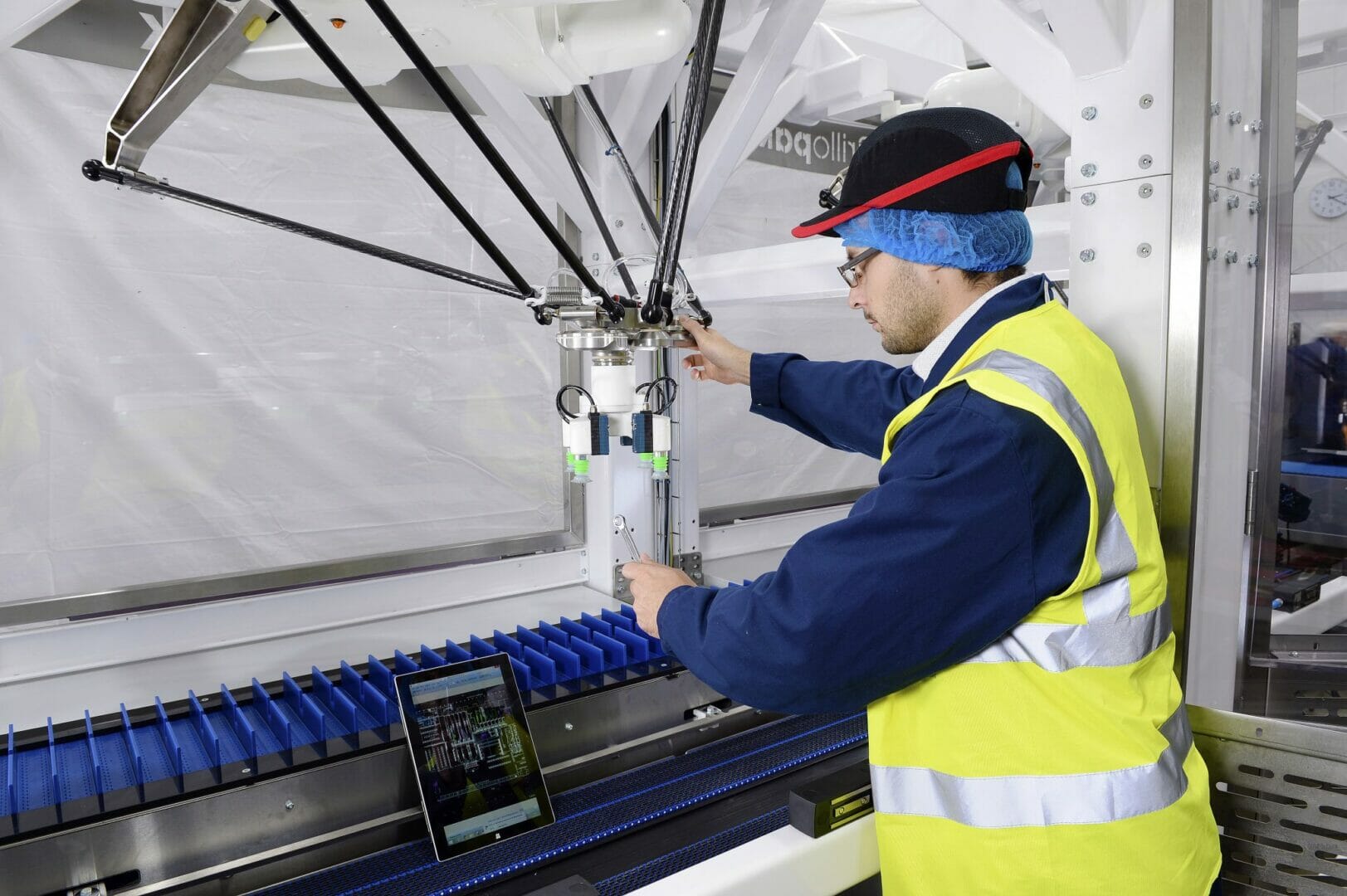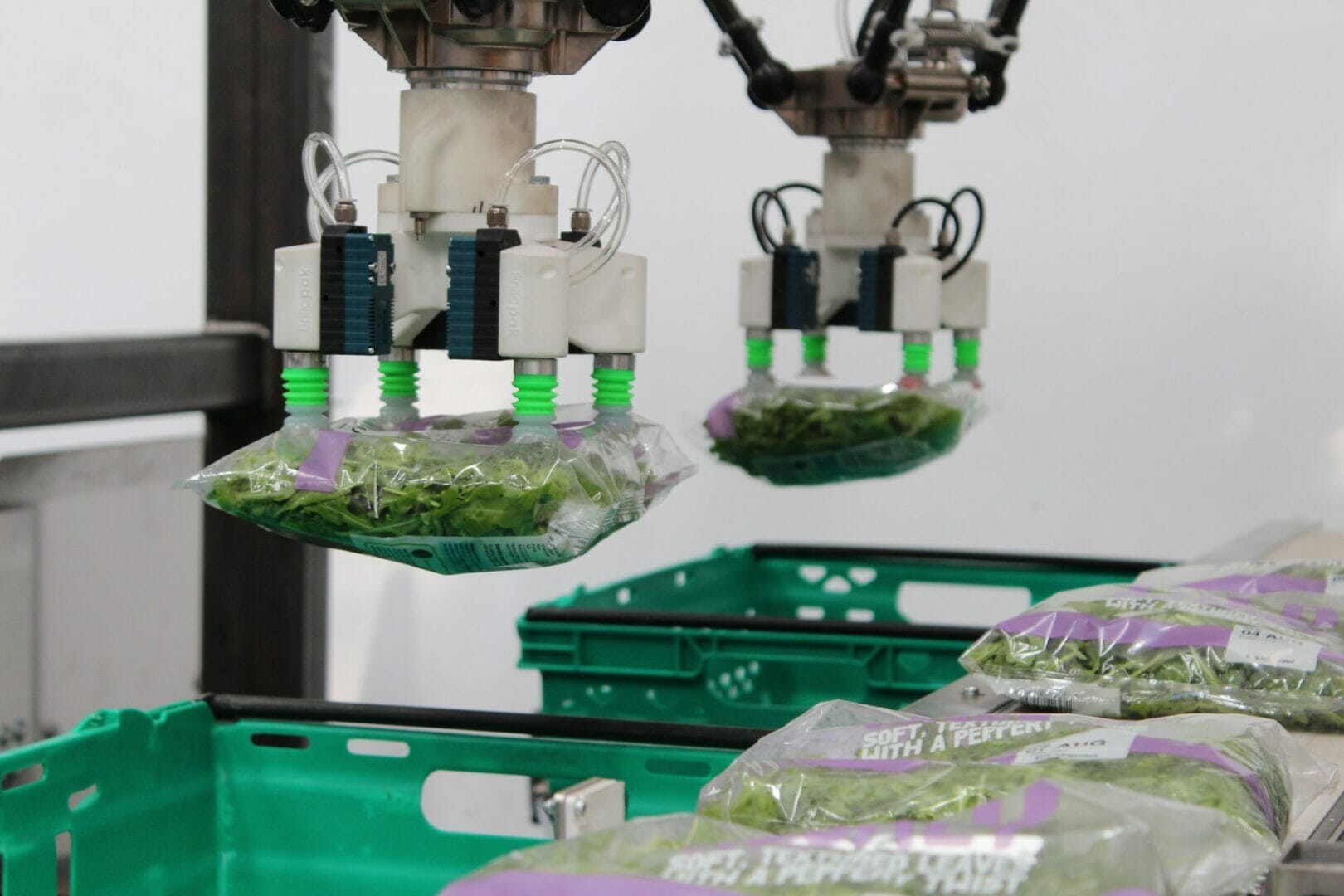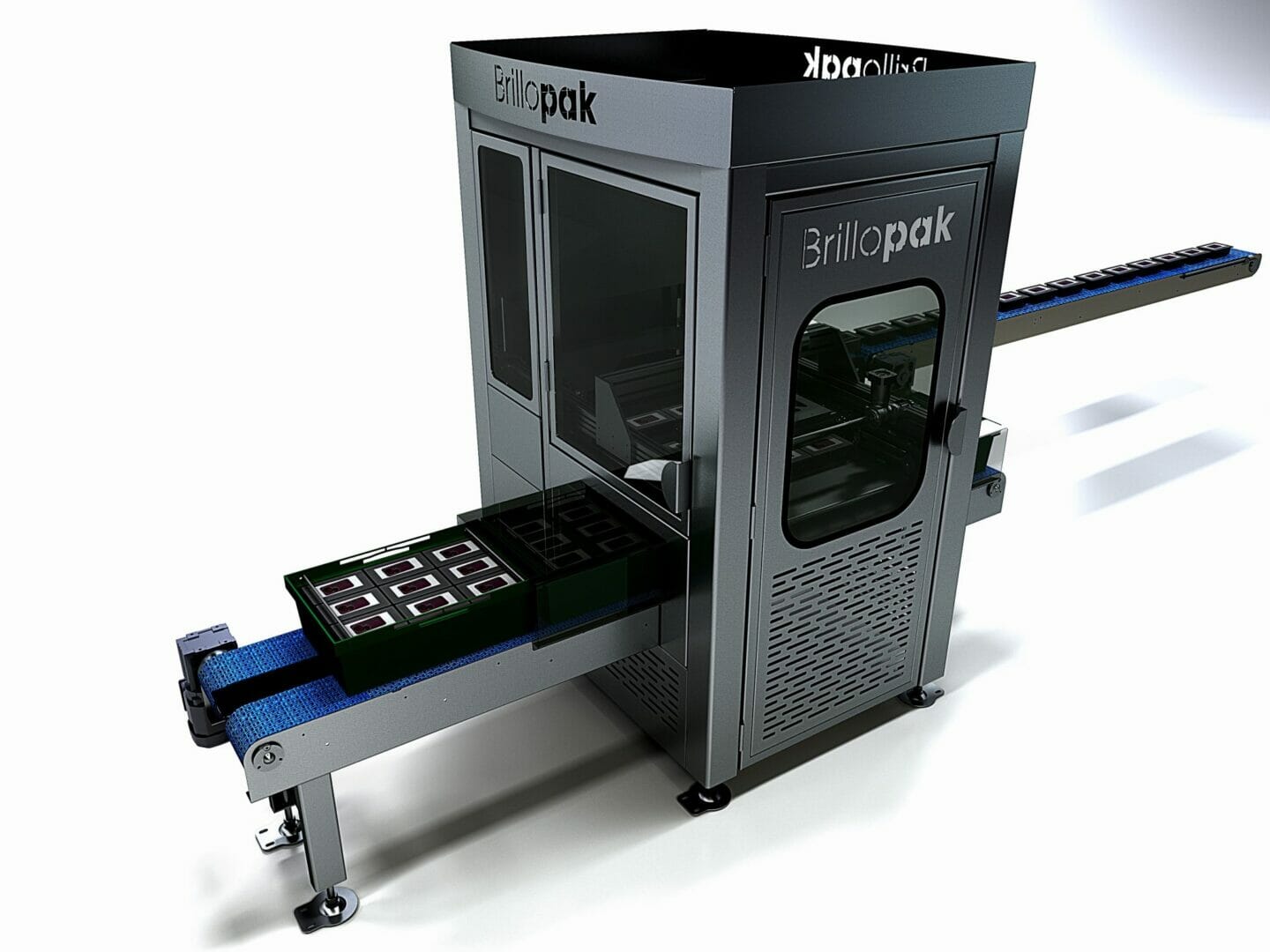Time and again we are reminded that we are in the age of automation. Annual statistics prepared by the International Federation of Robotics paints a positive picture for 2017, with a 31% increase in annual global shipments. However, the UK doesn’t make the top ten countries for investment. And despite an annual 19% increase, food and drink companies are still the smallest sector of all those listed globally for robotic investments.
David Jahn, director at automation company Brillopak believes that using terminology interchangeably, particularly robotics, AI and automation, is part of the reason why UK food factories have dodged making big investments, particularly at the end of line packaging and case loading lines. But with the EU labour crisis continuing to plague UK fresh produce houses, David emphasises that now is the time to get back to basics and review the entire productivity picture and how automation, not just robots, will align to and support long-term strategies.
“In the last decade robots, rightly or wrongly, have been positioned as a universal panacea to enhancing productivity,” claims David, believing that this is the root of the divergence. “While there are certain tasks, especially highly repetitive jobs, that robots can and do perform efficiently and economically, putting a robot onto a food packing line isn’t always the best path to higher productivity.”
Sometimes, automation efforts fail to improve productivity and performance. Is that the robot’s fault? No! “The issue rests with people being misinformed about the capabilities of robots in handling multiple variables and also not always appreciating the complexities of their own processes,” notes David.
There are so many different factors that factories and packhouses need to consider when examining their automation options. Cost is undoubtedly high on the agenda. While many OEMs imply that the prices of robots have fallen, for many food SMEs, particularly seasonal operations, the initial outlay can still be hard to justify.
Evolution not revolution
Despite perceptions, driven in part by Internet of Things and Industry 4:0, tomorrow’s food factories don’t just need robots, they need better processes. That’s where lean manufacturing and cost efficiencies can be realised, claims David. “It’s not rocket science. Yet it does require production managers to step back and consider all the details. Just because Germany, the US and China consider robotics to be the universal answer, there are other automation routes that UK fresh produce firms can explore that are equally revolutionary and can be accomplished by taking evolutionary steps.”
Automating large swaths of functions all at once under the banner of efficiency seldom works. “If you go too far too fast, the project can become a beast that’s impossible to control,” says David. “It can be especially challenging to attempt to do too much when integrating with legacy systems, as there are so many different factors that can affect line speed and cause bottlenecks.”
Taking a staggered approach to investment is how many food factories successfully automate, with most Brillopak customers adopting a three to five year plan, highlights David. Just as importantly, there should be an element of candidness, trust and teamwork with OEMs and machine builders when reviewing options. “It’s very rare for a food factory to have a blank canvas. The challenge many face is ensuring all systems on the line integrate smoothly, factor in the true production speeds up and down the line and are ergonomically accessible for maintenance.”
A common mistake that causes automation projects to stall or fail is hacking together ideas from different areas of the business with no clear framework or understanding of the different business needs and implications up and down the line. People from all areas of the operation need to be collectively involved in scoping out requirements.
“Because operatives see the day-to-day production issues they are a great source when it comes to pre-empting common issues,” comments David. “Leveraging this insight, such as all the SKUs, sizes and layer patterns at the outset is important as it factors in all of the glitches that may interrupt production, plus engages with your frontline teams. Rather than being automation adversaries, they become your automation champions.”
Simplicity is a key design principle
Like many things in life, there’s a tendency to overcomplicate automation. But as Brillopak can attest to, sometimes the more simple solutions deliver the most surprising results. The ergonomic C130 Semi-Automated Packstation, showcased for the first time at PPMA 2018 and shortlisted in the PPMA Group Awards for Most Innovative Packaging Machinery, is a perfect example.
Designed specifically to maximise the efficiency of manual packing operations where full automation is not an option, either by way of affordability or practicality, the system is an automated version of the traditional Lazy Susan style product collation/packing station, and makes each case loading line 15% more efficient. Rather than removing humans from the process, it helps manual workers to perform better, making their job less arduous when automation with consistency, due to the packing format or high volumes of product changeovers, is not an option.
Mansfields installed its third semi-automated packstation recently. Lee Port, Head of Operations comments: “What our Brillopak C130 systems have enabled us to accomplish is a gentler, calmer and more manageable end-of-line packing operation, with fewer bottlenecks.”
“Often there’s an element of paralysis by analysis,” notes David. “Instead of agonising over the choices, plant tours can be a powerful way of providing factories with direction and gauging how others have approached automating specific tasks. There’s no substitute for seeing things happening in practice.” Brillopak often puts people in touch with different packhouse plants and accompanies customers on visits.
As testimony, Mansfields visited Chingford fruit packers to observe the C130 Semi-Automated Packstation in action with the same Redpack flow wrap line they had recently installed. “The efficiency improvements were immediately evident,” reflects Lee.
Conceptualising consistency
Automation is imperative in food manufacturing for consistency in quality, production in high volumes and productivity. The daily quest to optimise productivity and meet tight deadlines means there’s a drive to minimise machine downtime. A well designed robotic case loading system featuring easy restarts and controlled, agile handling may provide the optimal solution for fresh produce factories repeatedly handling similar product and pack types.
“Accurate placement of products into crates using robots depends upon momentum and the control of movement by a robotic arm,” highlights David.
For flow wrap and vertical form fill and seal fresh produce packs, single picking can be the safest and fastest way to control this pick and place process and meet retailer specified case loading patterns. Brillopak’s Unipick P160 robotic case and crate packer also features on this year’s PPMA stand. The system, which averages over 100 packs p/m, applies a combination of robotics, encoders, vision and mechanics that provides enhanced control and make machine restarts less complex.
“Traditionally, to achieve anywhere close to 100 packs p/m in robotic case loading, machines pick layers or rows of product,” David comments. “However, this method tends to use mechanical devices such as belts and turners for collating products. This means more moving parts; more opportunities to damage the fresh produce items, e.g. apples, and more line stops. These frequent line stops have a significant impact on line efficiency and ultimately bottom line profits.”
Pick of the punnets
As processing lines become faster there is an increasing need for the case loading process to match the upstream throughput. This is especially true in the punnet tray-sealing arena, where products feed continuously out of sealing machines at between 65 to 180 packs p/m.
To address this bottleneck, Brillopak is unveiling its BR2 and BR5 Punnet Packer at PPMA, inviting visitors to sign up for a free one-week trial of their new concept.
Responding to market requests for a versatile, speedy, yet affordable top seal punnet packer, the system, which is priced from £87,500, offers SMEs in the fresh produce market with an affordable mechanical style automated system.
Capable of loading up to 180 top seal punnets and top seal trays per minute into full and half-sized crates, as well as lipped boxes, the BR Punnet Packer maximises throughput by collating product into a full layer, lifting and lowering in one seamless motion into the crate or box.
Designed to work with all tray sealing systems on the market today, this standard machine also helps to reduce order, build and installation lead times.
Automation without compromise
Having too much choice can be overwhelming and making a decision about which automated system will serve your food business for years to come should never be a knee jerk reaction.
The idea that robots are the answer to every production inefficiency is a bit overcooked. What’s clear is that there’s room for all types of automation efficiencies, be it a Parallel Spider-type robot, a 4-axis robot, a Cartesian Cobot, or an improved manual packing process that’s more ethical and sustainable for the workforce.
To make the decision making process easier, Brillopak has taken the step to streamline its automation case loading menu with three core compact, reliable and cost efficient products – the Semi-Automated Packstation, Unipick robots and the company’s newest mechanical-style BR Punnet Packer.
David rationalises: “Automation reservations in the past have centred on the prospect of machinery obsolescence. This has been a psychological barrier for some to fully embrace automation, while past integration failures may have deterred others from looking beyond tweaking their existing packing line. By focusing on what we are strongest at, we hope that more factories will recognise the opportunities that automation has to offer.”
See the full range of Brillopak’s automation options at PPMA 2018, Stand C50. www.brillopak.co.uk










